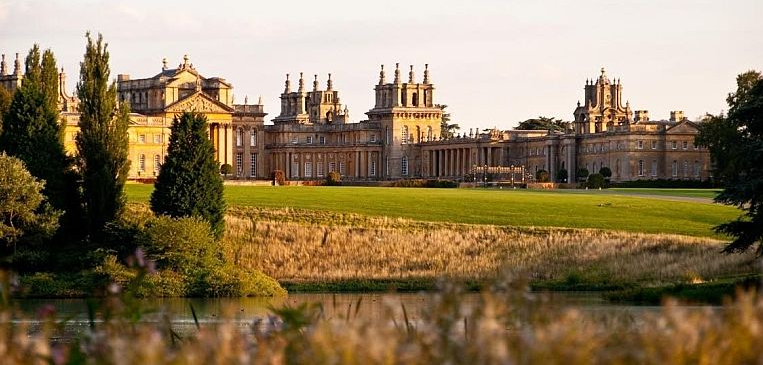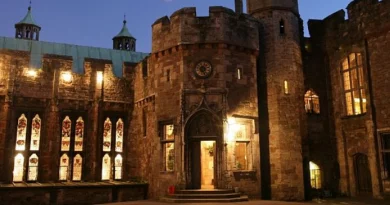The Cotswolds on Films – Movies
The Cotswolds has become something of a magnet for movies in recent years. It’s not just the tourists from all over the world who are drawn to the area by its natural beauty and picturesque towns and villages, quaint pubs and ancient buildings. It seems that film location managers increasingly love to use the Cotswolds as romantic backdrops to big screen movies or the perfect location for period television dramas. So (in roughly chronological order) here is Loving the Cotswolds’ rundown of some of the major films that have been shot in and close to the Cotswolds.
Magnificent Blenheim Palace, the historic country home in the Oxfordshire Cotswolds, has been a popular location choice for film-makers for decades.
The popularity of the historic country home on the edge of Woodstock goes way back to 1948 when Blenheim was used for the tragic historical romance Saraband for Dead Lovers, which starred Stewart Granger, Joan Greenwood and Anthony Quayle. The film was a change of direction for the Ealing Studios, famed for their comedies, and was their first colour film.
In 1975, Blenheim was used in Stanley Kubrick’s masterpiece Barry Lyndon, a British-American period drama. The lead character, played by Ryan O’Neal, is seen walking in the grounds and the palace itself can later be seen as the site of the garden party at which Barry attempts to consolidate his position in society.
The palace and its grounds can also been seen in the 1998 big-screen version of the 60s TV series The Avengers, where Blenheim became Hallucinogen Hall, the vast estate of Sir August de Wynter, played by screen legend Sean Connery.
Other movies filmed at Blenheim Palace include Kenneth Branagh’s Hamlet (1996); the action drama The Four Feathers (2002), starring Heath Ledger; The Libertine (2004) featuring Johnny Depp; and The Young Victoria (2009) starring Emily Blunt.
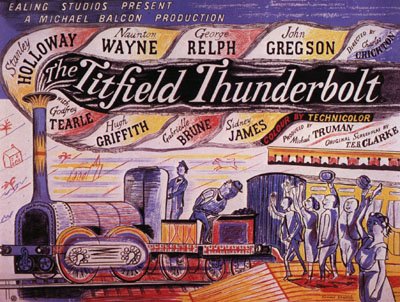
The Cotswold town of Tetbury provided the setting for part of the filming of the 1950 movie Chance of a Lifetime, starring Bernard Miles, Basil Radford, Kenneth More and Hattie Jacques.
In the times of austerity following the Second World War, the story is about a failing factory whose owner hands it over to the workers to run it for themselves.
The small Oxfordshire town of Woodstock is best known as being home to Blenheim Palace, but way back in the 1950s it got a taste of big screen fame when a ‘runaway train’ could be seen on its night-time journey through its streets in the classic Ealing comedy The Titfield Thunderbolt. The 1953 film, starring Stanley Holloway, was about a group of villagers trying to keep their branch line operating after British Railways decided to close it. The derailed train, which takes to the road, wasn’t actually a train at all, but a shell built onto a lorry chassis.
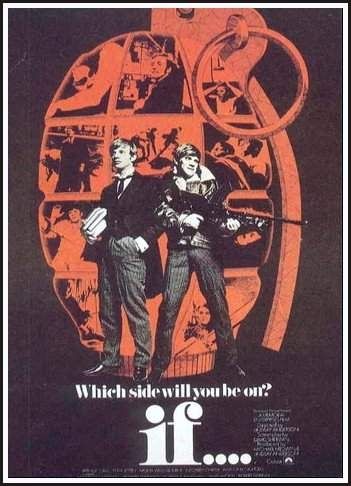
The classic 1968 film if…. which satirised English public school life was largely filmed at Cheltenham College, the former school of Lindsay Anderson, the film’s producer and director.if…. was the cinematic debut for the actor Malcolm McDowell and is famous for its depiction of a savage insurrection at a fictitious boys’ boarding school.Filming for if…. started in Cheltenham in March 1968 and lasted for three weeks during term-time and some of the boys who appeared in the film were actual students at Cheltenham College who had time off lessons to take part.In one scene, Peter Jeffrey (as headmaster) gives a series of speeches to the school prefects, some of whom were genuine Cheltenham students. The College reportedly received a facility fee of £1,000 per day over the 20 days.The magazine Total Film named if…. as the 16th greatest British film of all time.
Various towns and villages in the south Cotswolds were used as locations for the 1971 film Dulcima, starring John Mills. Mills played a farmer who loves a drink but his farm is in a state of disrepair. He falls for a young girl called Dulcima who takes pity on him and becomes his cleaner…and then things get complicated. Filming took place in several towns and villages, including Stroud, Minchinhampton, Nailsworth, Tetbury and Long Newnton.
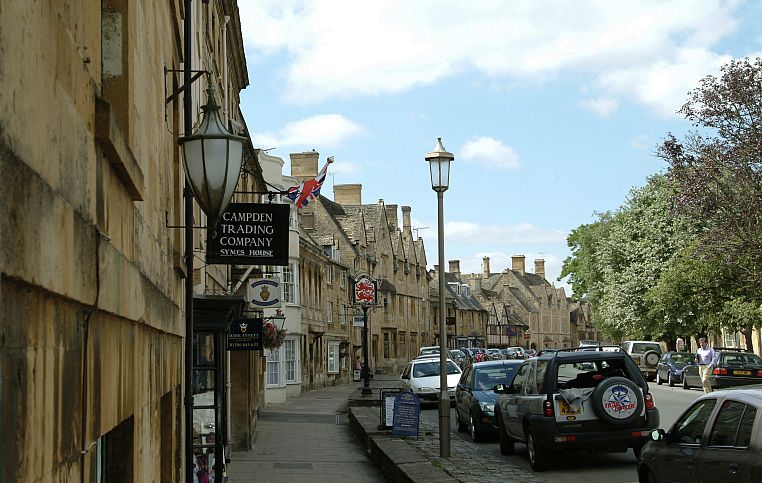
Also in 1971, the beautiful north Cotswold town of Chipping Campden was chosen as a location for Italian director Pier Paolo Pasolini’s adult film adaptation of The Canterbury Tales, based on the medieval narrative poem by Geoffrey Chaucer.
The cast was predominantly made up of Italian actors but included British stars Robin Askwith and Tom Baker – who went on to find fame as the fourth incarnation of Doctor Who, a role he played from 1974-81.
Cheltenham Racecourse provided the setting for the filming of the inspirational true life story of jockey Bob Champion who won the Grand National, the world’s greatest steeplechase, in 1981, just two years after he was diagnosed with testicular cancer. Champions, which hit the big screen in 1983, starred John Hurt at Champion, with the late Edward Woodward playing Josh Gifford, trainer of the winning horse Aldaniti, who played himself in the film, and died of old age in 1997.
The 1986 British spy thriller The Whistle Blower – which starred Michael Caine, James Fox, Nigel Havers and John Gielgud – was largely shot on location in Cheltenham as the Government Communications Headquarters (GCHQ) is central to the plot.
As well as receiving positive reviews, the film was notable for providing the last screen appearances of David Langton and Gordon Jackson, who both found fame in the long-running 1970s television drama series Upstairs, Downstairs. They died shortly after The Whistle Blower‘s release. Parts of Cheltenham featured included Cheltenham Racecourse, Cheltenham Crematorium and The Promenade. The Bredon Hill village of Kemerton was also used.
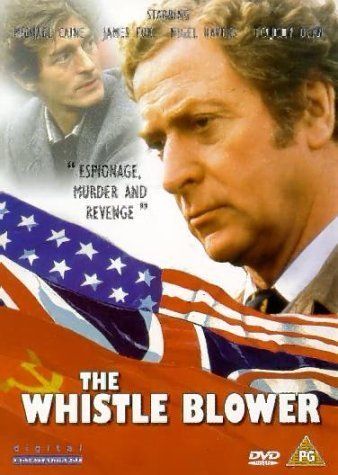
Badminton House, in the south of the Cotswolds, was one of a number of English country estates were used as locations for the filming of The Remains of the Day (1993). The all-star cast included Anthony Hopkins, Emma Thompson, James Fox, Christopher Reeve and Hugh Grant, and the Merchant Ivory film was nominated for eight Academy Awards. Hopkins played Mr Stephens, the perfect English butler entirely engrossed in his service to the aristocracy, who reviews his personal life in which he neglected his dying father and denied his feelings for Miss Kenton (Emma Thompson), an attractive young housekeeper.
Producer Ismail Merchant was said to have used his persuasive powers to cajole permission for the production to borrow various houses not normally open to the public. Among them was Dyrham Park, near Bath, and Badminton House, the principal seat of the Dukes of Beaufort, where the servants’ quarters, conservatory and entrance hall were used for filming. Badminton House, which is no longer open to the public, was transformed into an RAF base for the 2001 epic Pearl Harbour, starring Ben Affleck, Josh Hartnett, Alec Baldwin and Kate Beckinsale. It was used again for the 2002 British post-apocalyptic horror film 28 Days Later, directed by Danny Boyle.
Stanway House, near Winchcombe, has been used for filming a number of big screen period dramas.
In 1998 the film The Clandestine Marriage, set in the late 18th Century and centring on two families and marriages between them, was filmed at Stanway. Its stars included Joan Collins, Nigel Hawthorne and Timothy Spall.
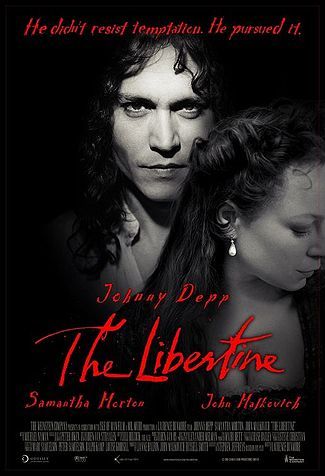
In 2004, Johnny Depp was among the actors caught on camera at Stanway for the filming of The Libertine. Depp played a debauched 17th Century poet, the womanising Earl of Rochester.
2004 also saw the release of a sumptuous film version of William Makepeace Thackeray’s classic novel Vanity Fair, another movie filmed at Stanway House, starring Reese Witherspoon, Jim Broadbent, Gabriel Byrne and Bob Hoskins.
The Cotswolds featured prominently in the British comedy film Greenfingers (2000) which was loosely based on a true story about the award-winning prisoners of HMP Leyhill, a minimum-security prison near Wotton-under-Edge, in the south Cotswolds.
The film, starring Clive Owen and Helen Mirren, tells the story of a prison inmate who goes on to compete in a national gardening competition. Locations also included The Slaughters, two beautiful villages near Bourton-on-the-Water, and the High Street in Fairford.
The first Harry Potter film, based on the book by Gloucestershire-born J K Rowling, was partially filmed in the county. The richly-vaulted cloisters of Gloucester Cathedral became the corridors leading to ‘Gryffindor House’ at Hogwarts during the filming of Harry Potter and the Philosopher’s Stone (2001), starring Daniel Radcliffe.
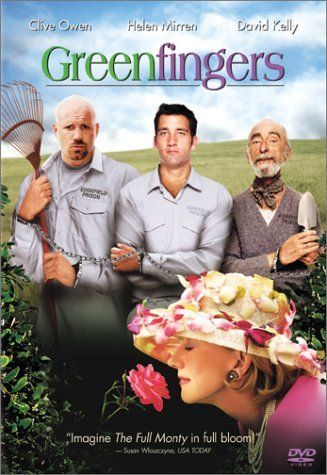
James Bond (Pierce Brosnan) visited the Cotswolds when ice chase scenes from Die Another Day (2002) were filmed at a car park near Bourton-on-the-Water and on the ex-RAF aircraft runway at nearby Upper Rissington. The spy who obviously loves the Cotswolds had already got a taste of the area when, back in 1983, the RAF base at Upper Heyford in Oxfordshire took on the guise of Feldstadt, the US Air Force Base in Germany, for the Bond movie Octopussy, starring Roger Moore as an earlier incarnation of 007.
More recently, the air base at Upper Heyford saw action in the 2013 American disaster zombie film World War Z, starring Brad Pitt as a former United Nations investigator who must travel the world to find a way to stop a zombie pandemic.
The smash-hit romantic comedy Bridget Jones’s Diary (2000), starring Renee Zellweger as a 30-something singleton living in London on a quest to find Mr Right, included scenes shot in the picturesque Cotswold village of Snowshill, near Broadway.
In the film, which also starred Hugh Grant and Colin Firth, the village known locally as “Snozzle” provided the location for Bridget Jones’s parent’s home where she first meets Mark Darcy (Firth) at Christmas.
Film crews spent four days in Snowshill in the month of June, using lots of fake snow to create a Christmas scene. St Barnabas Church in Snowshill was also used for filming.
Chipping Campden once again proved the choice of film-makers in 2001 when both buildings and local people were used for the movie Crush starring Andie Macdowell, Imelda Staunton and Anna Chancellor.
Producers found Campden the perfect venue for the story about the love lives of three 40-something women in a small English town. Locations included the stunning 15th Century St James’ Church which was used in a wedding scene and the church’s actual flower arranger helped with dressing the set.
Chipping Campden Town Hall, a local school and parts of the High Street were also captured on film, while many locals were used as extras for the film.
Just a few miles from Chipping Campden, Broadway Tower was another location used in the filming of Crush.
The small Cotswold town of Northleach became the fictional village of Ashby Wake in the 2003 big screen horror thriller The Gathering, starring Ioan Gruffudd, Christina Ricci and Kerry Fox.
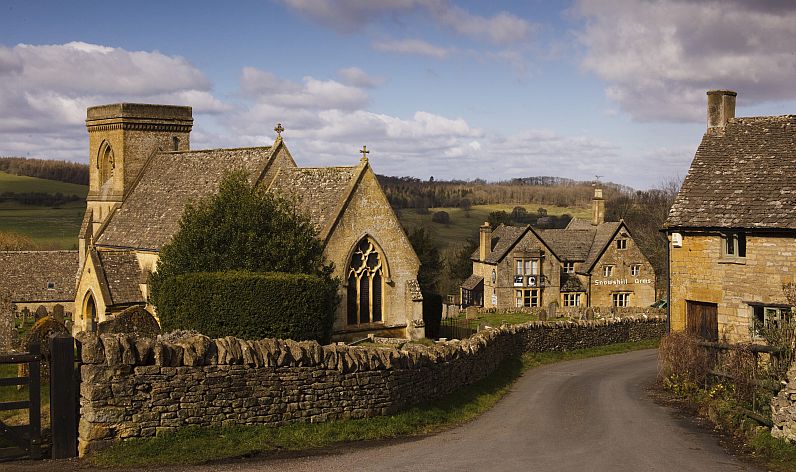
The Holiday, the 2006 Christmas-themed romantic comedy film starring Cameron Diaz, Kate Winslet, Jude Law and Jack Black, was partly filmed at Cornwell Manor in the Oxfordshire village of Cornwell, near Chipping Norton.
The movie sees the characters Amanda (Diaz) and Graham (Law) go on a quintessential romantic date through the charming English countryside and ending up at an old, stately mansion (Cornwell Manor) for a cozy lunch.
Cornwell Manor happens to be the birthplace of actress Rachel Ward, most famous for her role in the 1983 TV series The Thorn Birds.
The unspoilt Wiltshire village of Lacock, on the edge of the Cotswolds, which is almost entirely owned by the National Trust, has proved a popular location for a number of hit movies.
Some interior sequences in Harry Potter and the Chamber of Secrets (2002) were filmed at Lacock Abbey, including the cloister walk.
During four days in October 2007, Lacock was also used to film some scenes for the sixth Harry Potter film, Harry Potter and the Half-Blood Prince (2009). The spooky nights of Hogwarts were reportedly filmed there as well.
Lacock has been used for many other film and television productions, including the 2010 movie The Wolfman starring Anthony Hopkins. The village also provided a major location for the 2008 historical drama The Other Boleyn Girl starring Scarlett Johansson and Natalie Portman, which also had scenes shot at Berkeley Castle and at Owlpen Manor, the famous Tudor manor house near the lovely Cotswold village of Uley.
Not far away from Lacock, the charming Wiltshire village of Castle Combe has also proved a major draw for film-makers over the years.
The 1967 motion picture version of Doctor Dolittle starring Rex Harrison was filmed in Castle Combe and part of the village was converted into a miniature port, complete with jetty and boats.
More recently, Stardust (2007) and The Wolfman (2010) were shot in Castle Combe and for two weeks in September 2010, the village was used as a key location for Steven Spielberg’s acclaimed War Horse (2011), which proved a major box office hit.
Although Castle Combe was seen by millions of viewers after providing the setting for the main village in the story, some locals didn’t appreciate the tight security imposed during filming.
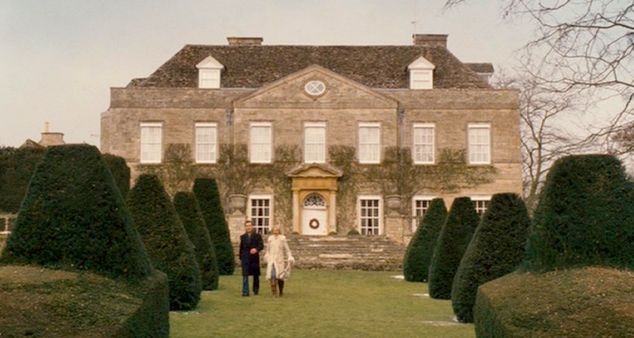
The Full Monteverdi, a British film written and directed by John La Bouchardière, was partly filmed in Cheltenham. The Full Monteverdi live show was launched at the Cheltenham Festival in 2004 and in 2007 the film version was released, based on Claudio Monteverdi’s fourth book of madrigals.
The film features the British vocal ensemble I Fagiolini and the original cast of actors from the live production. The title is a play on the name of the 1997 film The Full Monty.
The film was shot on location in Bristol, Cheltenham, Gloucester and London, including the London Eye.
Several locations in Gloucestershire provided settings for the 2006 film These Foolish Things, which boasted a star cast including Lauren Bacall, Anjelica Houston, Terence Stamp and Julia MacKenzie.
Based on Noel Langley’s novel There’s a Porpoise Close Behind Us, the love story, set in the 1940s, is based around a traditional theatre and tells the story of an actress’s rise to fame.
Filming locations in Cheltenham included Pittville Pump Room and the Hotel Kandinsky (now the Montpellier Chapter), while the Olde Black Bear pub in Tewkesbury and the Olympus Theatre in Gloucester also feature.
The parish church of St Michael and All Angels in the Cotswold village of Withington, between Cheltenham and Cirencester, was also used for filming.
A poppy field scene shot at a farm in the Cotswolds features in Atonement, one of the most successful British movies of the 21st Century.
The 2007 wartime drama, starring Keira Knightley and James McAvoy, won a clutch of Oscars, including Best Film, and grossed $130 million at the box office.
The film tells the story of fledgling writer Briony Tallis, who as a 13-year-old, irrevocably changes the course of several lives when she accuses her older sister’s lover of a crime he did not commit.
Whittington Lodge Farm in the village of Whittington, near Cheltenham, was used for the poppy field scene.
One of the Cotswolds’ most popular places to visit, Arlington Row in the picturesque and unspoilt village of Bibury, a few miles from Cirencester, was one of the locations used in the filming of Stardust, the 2007 romantic fantasy film starring Claire Danes, Sienna Miller, Michelle Pfiefer, Robert de Niro and Ricky Gervais.
Gloucestershire locations featured heavily in the 2007 action crime film Outlaw starring Sean Bean. The movie centres on a group of people who feel betrayed by their government and let down by the police form a modern-day outlaw posse in order to right what they see as the wrongs of society. Cheltenham locations included the Thistle Hotel and the Royal Oak pub in Prestbury, while other scenes were shot in Gloucester, Lydney and Coleford.
The towns of Stroud and Woodstock both appear in scenes from the 2010 British coming-of-age comedy-drama Cemetery Junction, written and directed by Ricky Gervais and Stephen Merchant. Set in 1970s England, the film stars Gervais, alongside Christian Cooke, Felicity Jones and Emily Watson.
With its impressive architecture and beautiful scenery, the city of Bath – at the beginning and the end of the Cotswold Way – has long been a popular setting with film-makers.
A scene from the 2012 box office smash Les Miserables, starring Hugh Jackman, Russell Crowe and Anne Hathaway, was filmed around Bath’s iconic Pulteney Bridge.
Other big name productions to have been filmed in the city include Vanity Fair (2004), starring Reese Witherspoon; Persuasion (2007); and The Duchess (2008), starring Keira Knightley and Ralph Fiennes.
The 2013 seasonal movie The Christmas Candle, which saw the singer Susan Boyle make her big screen debut, was shot in a number of locations in the north Cotswolds, including Broadway and Stanway Church.
The Cotswolds and surrounding area has continued to draw Hollywood film crews, right up to the present day.
In August 2014, there was a buzz of excitement when Gloucester Docks was turned into a film set for Alice in Wonderland: Through the Looking Glass.
The sequel to the 2010 movie Alice in Wonderland has an all-star cast, including Johnny Depp, Anne Hathaway, Helena Bonham Carter, Sacha Baron Cohen and Stephen Fry.
The film is scheduled to be released by Walt Disney Pictures in May 2016.
Gloucester Docks have previously been used for various other productions, including the 2006 movie Amazing Grace starring Ioan Gruffudd as William Wilberforce, who campaigned against the slave trade in 19th Century Britain and was responsible for steering anti-slave trade legislation through Parliament. Bakers Quay in Gloucester Docks was used as a backdrop against which to recreate the atmosphere of the East India Docks in London.

